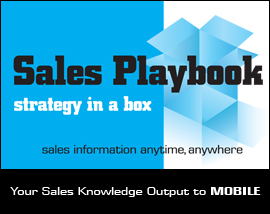What B2B (Business to Business) Buyers Want

In our digital era, so often what is happening during the buying process in the disconnect between the way people buy from the way businesses are selling. Prospecting customers are using things like Google, social media platforms and company websites to get product/service information on their own accord. Yet, companies are still selling in the old ways, using things like cold calls and mass emails to attract potential customers. The truth is buyers are constantly changing their processes, whereas businesses’ selling processes are remaining stagnant.
The old tactic of “here are the 25 people you need to connect with today, or the boss will be angry” should be pushed aside. The sales team should be focusing instead on the 25 people who are actually interested in your product/service. Who are the people visiting your website? Who are the people looking at what you offer? You need to understand how these people are engaged, and then engage with them on their terms and on their time.
Determining where and how potential customers are engaging is step one. Utilize those little computers that are attached to all of us: get on your smartphone, get on Google News, get on Twitter, be conscious of your emails. It’s so important to know what is happening in the world and what is happening in your industry. Now more than ever, sales and marketing are converging – especially on the web. In typical organizations there is a sales team and a marketing team, but on the web it’s about blurring the distinction between the two. On the web you need to create the the content people will want to engage with and then lock them down at the right point in the sales process, which is made easier to understand based on the content that they consume. The content, and later on the buyer, is what connects the sales and marketing. A typical buyer is looking to solve a problem using a product or service; they are setting out to make that transaction. The element that lots of companies are missing though is that the modern buyer is doing all the research themselves. From online reviews to social media forums, it no longer about what the salesperson pitches. The buyer is doing the sales themselves.
One golden rule when it comes to sales strategies is great customer service. The better your treat customers the more they will talk about it (verbally and online). Current customers will buy more and new ones will be brought into the mix. Always remember that service creates customer advocates.
read moreHow to Generate More Sales Leads

We hear it time and time again: salespeople are having a difficult time generating quality leads. Though sometimes this is due to an exhausted market, a lot of the time it falls onto the sales people having unrealistic expectations (assuming the company they work for will give them a list of quality leads) or remaining in their comfort zone (working with current, already established customers). Rather than providing leads, it’s important to have the right processes in place to teach your sales team how to generate them on their own. Think of this analogy: give a man a fish and feed him for a day, teach a man how to fish and feed him for a lifetime.
In a lot of organizations, it is the the marketing department who are generating the leads and the sales team doing the followups. The problem with this is that the leads aren’t coming from those doing the selling. The sales team is receiving cold lists of leads from the marketing department, lists filled with people they have had no contact with and in turn, no trusting relationship with. It’s important to empower the sales team to be a part of the lead generation process and take ownership of their leads – start to finish.
However, bringing the marketing manager/team into the equation is still important. Empower them as leaders by expressing that they are in the position to really help the sales team. One tactic is to provide the marketing team with a criteria for the types of leads the sales people are searching for. This will hopefully result in the creation of lists with higher potential for success.
read moreCold Calls & Newsletters as Business Strategies

Cold Calls
We describe cold calls as a “push” strategy, meaning it may be viewed as obtrusive. However, if you are able to get your initial message out quickly as to why there is value in them listening to you, you are golden. Grabbing their attention is step one, but the key to successful cold calls is keeping the focus on how they can benefit from your product or service. If you do this correctly cold calls can get you faster results than most other marketing methods.
Approaching cold calls can be daunting at first. It’s always important to open with your name and where you are calling from. Don’t ask them how they are, but instead state why you are calling right off the bat. Be concise, express value, and create interest so they continue to listen. The two most important pieces of this whole process are reaching the right people within the organization (determining your target audience) and developing a benefit statement that is compelling.
For most people, the challenging part of cold calls is walking that line between being pushy and attempting to generate interest. If you approach the call with an expectation to be in communication with them in the future, they will see you are not trying to sell something over the phone that day, but rather attempting to create a relationship that could be valuable to them later on.
A few common mistakes associated with cold calls is pushing to hard and sounding too much like a salesperson. Avoid these and do your best to not sound like an assistant for the person you are calling for – most people can see right through this. Closing a cold call seems to be an issue for some people too. Always remember that the point of a cold call isn’t to close with a sale, but to move the opportunity further along by gaining the potential customer’s trust.
Newsletters
Newsletters are a form of drip marketing, which is a strategy in which you provide small chunks of information to the customer or prospect over time through an opt-in email campaign. The regulatory and visibility of the constant touches feed the image and awareness about your product or service – it is no different than traditional advertising. However, with today’s technologies we can segment the content, frequency and audience based on what we know about the customer or prospect.
Implementing newsletters in your marketing mix is about a longer term touch program that keeps your name and solutions at the front of people’s minds. They are a fantastic means of keeping both customers and prospects up to date with industry news, your latest offerings, and how you are solving problems that they may be experiencing. It is a nice way to build a profile for your business, with the end goal being them remembering you if they do need something.
Newsletters, with the right content that delivers valuable information, can really work for any industry. Though they do work best if you are offering a higher end product (as lower priced transactional businesses don’t have the same chance to build trust), they remain a low cost marketing method that provides a very targeted list of customers and prospects information on your business.
Including a variety of topics and keeping your content short and to the point is key. Also, make sure when generating content it is not coming off as a sales pitch. Other than content the most important aspect of a newsletter is imagery. Whether it’s an embed video or a simple stock photo attached to a hyperlink, these will be clicked more than the content will be read.
Pro tip: never exceed more than 12 newsletter per year. Quarterly is a good minimum.
read moreElements of Successful Sales Management

In the world of sales management it is believed that people leave managers, not companies. Though a customer may be attracted to your company initially and begin business with you, the reason for leaving almost always comes down to the overseeing manager. Because of this, a top priority for organizations should be the training and continuous development of their managers through programs that cover everything from coaching skills to financial understanding of the company. Managers should be setting a positive example for the people around them and be putting critical focus on helping to move those people onward and upward. By doing this, the people below you will know you’re interested in their well-being and advancement, which makes everyone more happy.
As a salesperson you “own” the customer, but as a manager you “own” the salesperson. The role of the manager is to transform this ownership concept in a way that insures people don’t turn over. When you’re a salesperson your day is made up of producing revenue and meeting quota. There are a lot of ways in which you are evaluated, most of which are financially driven. The manager’s role is important because it’s about more than earning that dollar, it’s about having the skills necessary to lead the other team members effectively and genuinely. Salespeople can tell when someone cares about them and wants them to be successful, and if they don’t feel their managers do the results can be very negative. The most important thing to do as a salesperson is give your leaders feedback quickly and constructively, so they can then self-assess and hopefully make changes to improve the conditions for the entire team.
When a sales manager isn’t doing their job successfully it’s important for the higher up managers to not see it as a failure right off the bat. Maybe it’s about fit; they could be a great performer but just not in that particular job. It’s good to then put focus into finding the best fit for that individual. Perhaps not as a manager but a lateral position where they can be successful and contribute positively to the organization’s performance. However, sometimes it is a failure and in that case it’s important to remain positive. Remember, people who are successful often fail more because they try more!
When hiring a sales manager it’s important to hire someone you believe will create a better customer experience. Looking at the skills surrounding customer service (active listening, responding, empathy etc.) and testing for them before hiring is key. They have to be problem solvers and be able to serve customers in a mutually beneficial way. Managers have to be able to find balance between both sales and service: people don’t just want to be sold something, they want to be serviced throughout their entire working life with your organization.
read more
Effective Lead Generation

Lead generation is the marriage of a couple different disciplines, these disciplines being marketing and sales. There is an overarching concept that sales and marketing are the same string, one that companies rarely tie together. Lead generation is all about tying the string together.
One of the reasons companies find success in generating leads is that they work very closely with the marketing department, understanding both their message and medium. With that information, they’re able to reflect the message in the outbound sales messaging.
It’s important to also note that something that may generate demand is not necessarily the same something you would use to close a deal. Generating demand is about sparking interest. Think of a typical marketing campaign, it does not usually include a ton of information about the product, but rather a more simple “call to action.” Sales on the other hand is about the “a-list” of features/benefits a client is looking for and how your product provides them.
Marketing and sales may be two different disciplines, but it’s important to avoid disconnect. At the end of the day they have the same goal: sell product. The marketing department will have a specific message, but when that messages is passed along to the sales team it gets translated into something different. Think about it, marketing is quick (3 or 4 seconds, 140 characters or less etc.), so it’s important for the sales people to take that message and fine tune it. They make the message more rich and applicable to clients, hopefully resulting in responses.
To get these results the proper training methodology is necessary. Insuring your inbound sales team is receiving the same training as the outbound team is important, also providing both teams with periodic training refreshers can help with retention. Another thing successful companies do is focus on what we call an “account map.” Professionals are usually focused on what and why the consumer is buying, but tend to look past how the decision is being made. An account map focuses on this and considers not only the individual your salesperson is speaking with, but all the other people in the organization’s background and how they affect the closing of a sale. Sales training should be custom, it’s important maintain a huge library of content and assemble it for specific incidences and always keep skill development in mind.
Another lead generation tactic is an integrated approach, using cold calls to make initial contact and then gaining permission to add them to a newsletter campaign (due to spam laws you must gain permission). The idea is then to call them for touch points two to three times per year. This approach is low cost and high impact, driving website traffic and keeping prospects in a half digital half human touch relationship until they’re ready to buy.
read more

